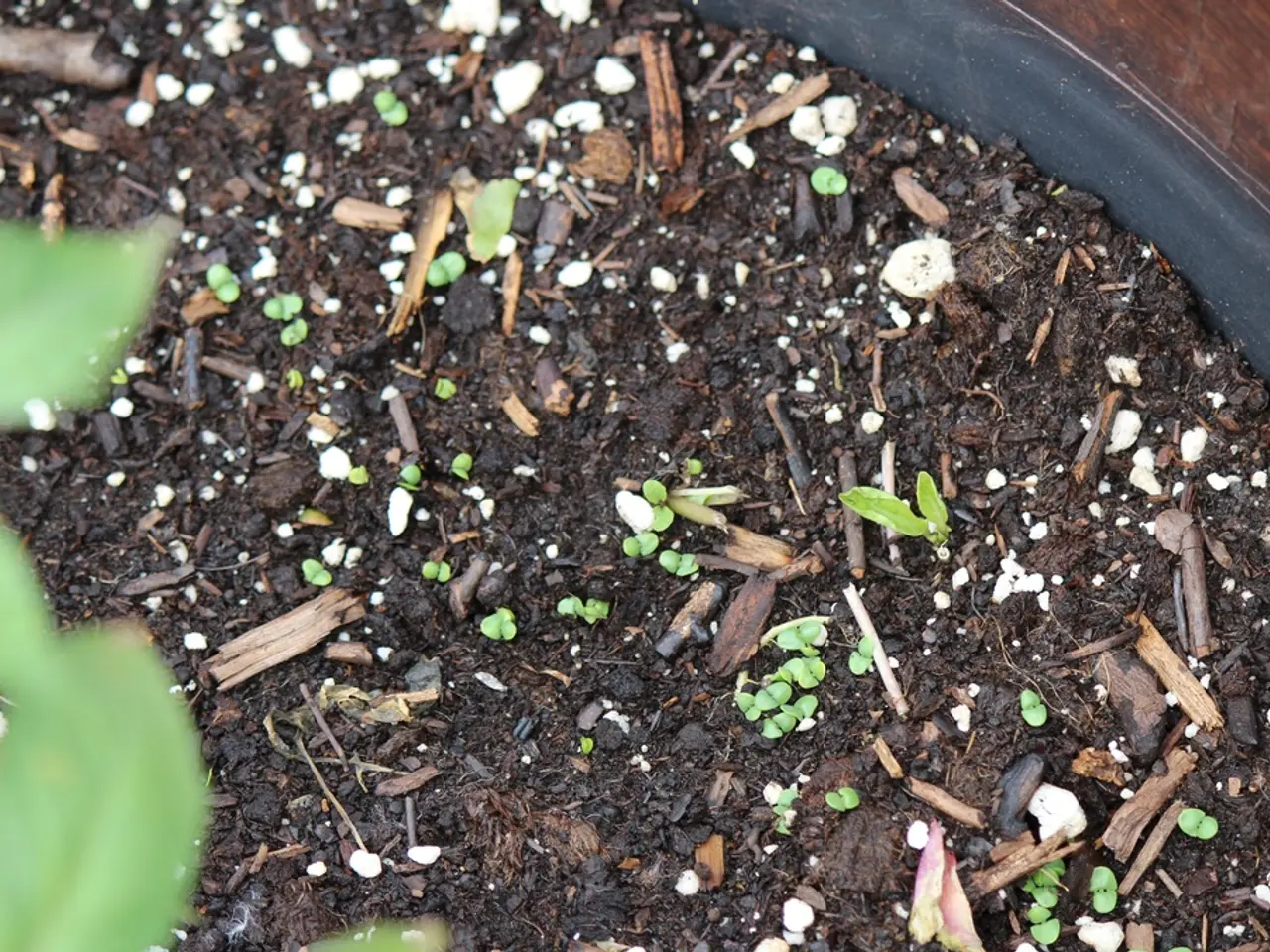Methods for Lowering Soil pH - Effective Strategies to Increase Soil Acidity
In the world of gardening, understanding the pH of soil is crucial for the growth and health of various plants. Some plants thrive in acidic soil, while others require alkaline conditions. This article will focus on how to lower soil pH to create an ideal environment for acid-loving plants.
Firstly, it's essential to know that soil with a pH score under 7 is termed acidic, while a pH score over 7 is alkaline. Soil pH measures the amount of hydrogen atoms in the soil, with a range of 0 to 14, and a pH score of 7 is neutral.
For those who wish to lower soil pH (make soil more acidic), there are several options available. Teo Spengler, a master gardener and docent at the San Francisco Botanical Garden, suggests using elemental sulfur, iron sulfate, aluminum sulfate, organic mulches, acid-forming fertilizers, and peat moss.
Elemental sulfur lowers soil pH long-term by microbial oxidation, making it highly recommended for acid-loving plants like blueberries. Iron sulfate acts faster and also adds micronutrients, making it useful in greenhouses, but it's crucial to monitor for iron toxicity. Aluminum sulfate is fast-acting but can cause aluminum toxicity, so it's better for ornamentals and non-edible crops. Organic mulches like pine bark, pine needles, sawdust, or composted leaves gradually acidify soil while improving organic matter and microbial activity. Acid-forming fertilizers such as ammonium sulfate or urea lower pH gently while providing nitrogen nutrients. Peat moss is good for potting mixes or blueberry beds but is less sustainable on a large scale.
Natural approaches involve regularly incorporating organic matter (compost, pine needles) to support soil microbes and slowly acidify soil.
Plants that benefit from acidic soil (generally pH below 6.0-6.5) include blueberries (very acid-loving), azaleas, rhododendrons, and camellias (ericaceous plants), cranberries, hydrangeas, and many types of pine trees. Some citrus trees, like orange, prefer slightly acidic soil as well. Certain vegetables like potatoes and carrots also prefer slightly acidic conditions.
When modifying soil pH, it's important to note that the process is a slow one that must be done before planting. Distortions in certain plants, such as small, yellow leaves with bright green veins, may occur in slightly too alkaline soil. High soil pH can result in iron deficiency in plants, making it difficult for them to thrive.
In conclusion, to acidify soil effectively, use elemental sulfur for a long-term, steady pH drop. For quicker action, iron or aluminum sulfate can work, but with caution due to possible toxicity. Incorporate acidic organic mulches and acid-forming fertilizers for gradual acidification. Tailor amendment choice according to your plant’s sensitivity and crop type. These methods help create an ideal soil pH that improves nutrient availability and plant health for acid-loving species.
Liz Baessler, the Senior Editor, oversees this informative guide. Teo Spengler, who has studied horticulture and written about nature, trees, plants, and gardening for over two decades, has contributed significantly to this article. Teo currently splits her life between San Francisco and the French Basque Country.
[1] Teo Spengler, "Acidifying Soil for Your Garden," SF Gate, 12 March 2021, https://homeguides.sfgate.com/acidifying-soil-garden-77080.html [2] Teo Spengler, "How to Lower Soil pH for Blueberries," SF Gate, 16 January 2022, https://homeguides.sfgate.com/lower-soil-ph-blueberries-81023.html [3] Teo Spengler, "How to Lower Soil pH for Citrus Trees," SF Gate, 16 January 2022, https://homeguides.sfgate.com/lower-soil-ph-citrus-trees-78440.html [4] Teo Spengler, "How to Lower Soil pH for Azaleas, Rhododendrons, and Camellias," SF Gate, 16 January 2022, https://homeguides.sfgate.com/lower-soil-ph-azaleas-rhododendrons-camellias-78441.html [5] Teo Spengler, "How to Lower Soil pH for Pine Trees," SF Gate, 16 January 2022, https://homeguides.sfgate.com/lower-soil-ph-pine-trees-78442.html
- To create an optimal environment for acid-loving plants like azaleas, rhododendrons, and camellias, consider lowering soil pH using methods such as elemental sulfur, organic mulches, or acid-forming fertilizers.
- When growing blueberry plants, one effective way to lower soil pH is to use elemental sulfur, a long-term solution that helps ensure the soil remains acidic, making it suitable for blueberries.




